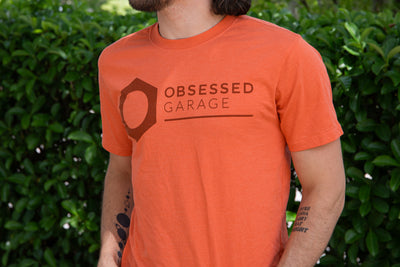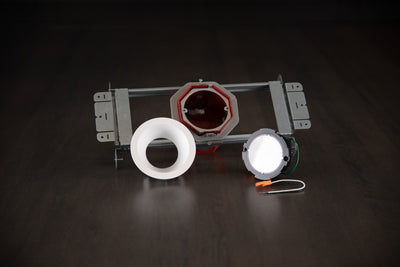Best Computer Speakers for Your Office Setup

If it’s a rich, powerful, warm stereo sound you want in your home or office space, the PSB Alpha AM5s are some of the best computer speakers money can buy. I tend to lean towards purchasing higher-end, more expensive speakers like Dynaudio, but these, to my surprise, are freaking great.
Picking speakers are like picking a mutual fund; there’re thousands of them to choose from. Having a trusted source and crazy audio person like myself to consult you on which one(s) to get, I think is extremely valuable. We don’t have the in-store experience we used to back in the day where we could walk in and have a guy/girl demonstrate a product to us; we’re now solely dependent on guys like me to explain, teach, and earn your trust. I’m up for that challenge.
Why PSB AM5s?
The PSB AM5 bookshelf speakers are like the Active 2.0 pressure washer but with Kranzle’s performance. In other words, you’re getting a great-sounding speaker with good amplitude for a fraction of the cost. These won’t blow your eardrums out and don’t need to; they’re perfect for a home/office space setup.
Paul Barton (chief designer of PSB speakers) has done something magical with these things. At first, I was skeptical about how good they would be because of how inexpensive they were and how they looked (they have a MDF/vinyl cabinet). It wasn’t until I played them that I was utterly blown away. I spent a good two hours listening to them and my beloved Dynaudio speakers in the garage and captured it all on video - be sure to check that out; I was in audio heaven.
I’m a soft-dome, silk-dome tweeter kind of guy. Bright sounds bother me, which is why I initially only wanted to go with Dynaudio, but these showed up on my radar and piqued my interest. Whatever magic fairy dust Paul S. Barton sprinkled on these speakers to make them sound the way they do is impressive. The shocker for me when I got the specs on these is they have an aluminum-dome tweeter, which I freaking hate. If you don’t already know this, aluminum-dome tweeters disperse a brighter/tinnier sound, but not these puppies, for whatever genius reason.
You won’t need much time to break these in - maybe 25 to 30 hours. Mark my words when I say you will be in complete shock. For what you’re paying to get a self-contained set of bookshelf speakers with a built-in amplifier, it’s remarkable. The accessories you’ll need to set this up are:
- Your bluetooth-enabled desktop or laptop
- A USB cable (not included with speakers)
That’s it. You will get a 3.5 minijack cable, but as I said, I suggest you connect via USB. You’ll get better quality audio this way.
One of the benefits of having active speakers vs. passive for your desk setup is you don’t need extra hardware (amplifier, cables) to get up and running. Passive speakers definitely have their upside, but we want to keep things clean and simple in this application. Now, if you’re looking to get into some more advanced/sophisticated arrangements, my team and I have put together some really legit audio solutions.
I thought I’d share some key features and specs with you. We’re a spec-driven company, so it’s befitting, and I geek out over this kind of stuff.
Specs
- 5 ½” (133mm) Black steel polypropylene midbass woofer
- ¾” (19mm) Aluminium ferro-fluid cooler tweeter with front waveguide
- Built with a high-performance Class D amplifier with 50 watts
- Acoustically engineered cabinet with a tuned port for low bass
- Frequency response: 55-20,000 Hz (±3dB)
- Selectable sound modes for prioritizing dialogue, musical soundstage, and more
- Built-in phono preamp with a rear RCA input for turntables
- Qualcomm aptX for high-quality Bluetooth streaming
- Rear-mounted volume control, sub out, and AUX inputs
Connections
- Dedicated phono input for connecting a turntable with a moving magnet cartridge
- 3.5mm auxiliary input
- Toslink optical digital input for connecting digital sources
- Mini Type B USB for connecting a computer
- Mono RCA output for connecting a powered subwoofer

How To Tune Them
The AM5s have a DSP (digital signal processor) with different modes. I suggest you leave it on the flat/basic mode. I like to come down one notch in treble and up one notch in bass. You don’t want to max the bass and treble; it won’t sound good. Be aware that there is a subwoofer button on the remote, so if you don’t have a subwoofer connected (or a 2.1 system) and think the speakers aren’t producing enough bass, then you’ll want to toggle that button on the included remote.
I sell Dynaudio subwoofers, which are a little pricey, but if you can swing it and want to add a sub to this setup, I’d tell you to go with the SUB 3s. I also just became an SVS dealer and will have those in the store soon. Those will be more practical for your home/office setup.
If you want to inquire about which SVS sub will work best with these AM5s, visit support.obsessedgarage.com and my guys can help you out. They all have my knowledge with this audio stuff and can get you precisely what you need.
My Last Thoughts and Conclusion
You have to sift through the people that only deal with cheap stuff and look to the guys who only listen to the high-end stuff. I definitely don’t like talking about things I don’t like, and I most certainly don’t give a crap about cheap stuff. Anyone who knows me knows I don’t light up about most things, but these freaking speakers are incredible.
If you’re in the market for an inexpensive pair of computer speakers, I’m telling you, get these. I did a deep dive into them and shared my most honest, transparent thoughts. You’ll want to check that out.


